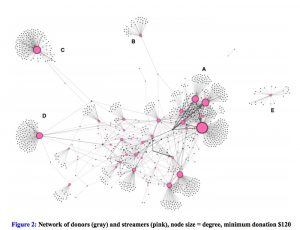Like many of you, I have watched the horrors unfold in Afghanistan this week. There has been some excellent reporting — particularly by Al Jazeera on their English channel — but very little said about one massive and positive change that the past 20 years has seen: hundreds of thousands of boys and girls there have received an education that was previously out of reach. I am particularly glad to see that many students have also gotten interested in STEM fields as well.
I was reminded of something that happened to me nine summers ago, when I was one of the judges in the annual Microsoft Imagine Cup collegiate software contest, held that year in Sydney. By chance, I ended up judging three teams that were all female students from Ecuador, Qatar and Oman. Just so you understand the process: each country holds its own competition, and that team goes on to the finals. That means that the women bested dozens if not hundreds of other teams in their respective countries.

My post from 2012 shows the Omani team (above) and how carefully they branded themselves with red head scarfs (their app was something dealing with blood distribution, hence the color and the logos on their shirts). The Qatari team had a somewhat different style: one woman wore sweats and sneakers, one wore a full-on burka covering everything but a screen for her eyes, and the other two had modest coverings in between those points. It was my first time seeing anyone give a talk in a burka, and it was memorable. All four of them were from the same university, which was also an important point. While none of my teams were finalists, it didn’t really matter. They all were part of the 375 students who made it to Sydney, and they all got a lot out of the experience, as did I.
The reason I was thinking about the issues for women’s STEM education was this piece that I found in the NY Times about the FIRST robotics competition and the Afghan girls team. The story was written two years ago, and pre-dates what is happening now.
The girls were able to made it out of Kabul on Tuesday to Oman, where they will continue their STEM education. But there are certainly many thousands of girls who aren’t so fortunate, and we’ll see what happens in the coming weeks and months. I think many of us are literally holding our breaths and hoping for the best.
One of the reasons for the FIRST girls team’s success was great mentorship by Roya Mahboob, an Afghan expat tech entrepreneur and the team’s founder. She — yes you might not know that Roya is a woman’s name and is Persian meaning visionary — isn’t the only one that got behind these girls — if you read some of their own stories you can see that they had the support of an older generation of women who had gotten STEM education — the “tech aunties brigade” as I would call them — who were important role models. It shows that this progress happens slowly — family by family — as the old world order and obstacles are broken down bit by bit. Think about that for a moment: these girls already had older family members who were established in their careers. In Afghanistan, there isn’t a glass ceiling, but a glass floor to just gain entry.
While there is a lot to be said about whether America and the other NATO allies should have been in Afghanistan to begin with, I think you could make an argument that our focus on education was a net positive for the country and its future. From various government sources cited in this report, “literacy among 15- to 24-year-olds increased by 28 percentage points among males and 19 points among females, primarily driven by increases in rural areas.” This is over the period from 2005 to 2017. And while I couldn’t find any STEM-specific stats, you can see that education has had a big impact. I don’t know if the mistakes of our “endless war” can be absolved by this one small but shining result, but I am glad to see more all-girls STEM teams take their message around the world, and to motivate others to try to start their own STEM careers.

 ims to eliminate the gatekeeping middleman role of corporate PR, and put sources directly in touch with the journalists that want to quote them. HARO, as it is known, has been less useful as of late, but there is a new, venture-backed startup called
ims to eliminate the gatekeeping middleman role of corporate PR, and put sources directly in touch with the journalists that want to quote them. HARO, as it is known, has been less useful as of late, but there is a new, venture-backed startup called 

 New York Times reporters Sheera Frenkel and Cecilia Kang have been covering the trials and tribulations of Facebook for the past several years, and they have used their reporting to form the basis of their new book,
New York Times reporters Sheera Frenkel and Cecilia Kang have been covering the trials and tribulations of Facebook for the past several years, and they have used their reporting to form the basis of their new book, 
